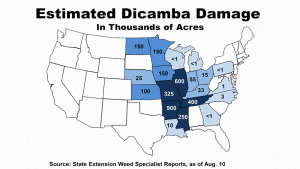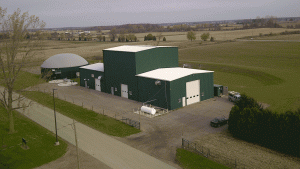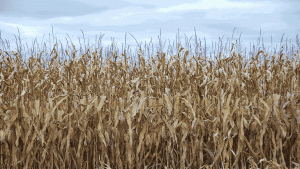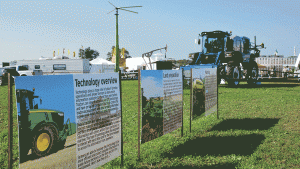Identifying plant stress
THE USE OF THERMODYNAMICS

ALTHOUGH VETERINARIANS AND doctors rely on thermometers to improve their daily diagnoses, field agronomists lack an equivalent tool of their own. But with two researchers studying the impact thermodynamic principles could have on precision agriculture, one day, that could change.
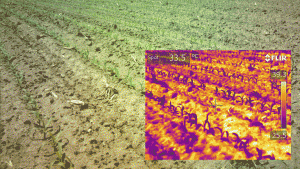
Since October 2015, Clarence Swanton, a weed scientist with the University of Guelph, and Roydon Fraser, an engineer with the University of Waterloo, have been working to determine if physiological stress in corn plants can be caught faster by taking plant temperature. Although colour reflectance and chlorophyll content technologies have proven effective at finding stress in fields to some degree, these researchers think they can find a better way to detect rapid changes within a crop using thermodynamic principles.
Experiments were first started in greenhouse conditions at the University of Guelph during the winter of 2015 and 2016, and then moved to outdoor field testing the following May. In the four original greenhouse trials, corn seedlings experiencing initial nitrogen stress were monitored for leaf surface temperature changes both before and after different rates of nitrogen were applied. Then, between May and October 2016, three field trials were conducted at the Elora and Woodstock Research Stations. Two trials conducted at Woodstock assessed the stress caused by nitrogen deficiency and another focused on weeds, in addition to one other nitrogen trial in Elora. Leaf and air temperature data were collected twice a week and the corn was harvested in October 2016.
Two hypotheses were developed and tested simultaneously in this experiment. The first is that less stressed plants will utilize the sun’s energy more efficiently, thereby reducing its leaf surface temperature. The second hypothesis is that the more developed the plant (ie. plant growth stage, height, and crop yield), the lower the leaf surface temperature drops. According to Swanton, most of their time spent on the project this year has been back in the field again and analyzing all the data they’ve collected since October 2015. But so far, it does seem to have some lessons to offer.
“We know that a stressed plant does not have the same ability to adjust its temperature,” he says. “A stressed plant, in any given environment, should be hotter than a healthier plant.”
THERMODYNAMIC ANSWERS
Now that their preliminary research findings have established that internal plant temperatures do correlate with plant stress, the next step is explaining how. As someone who is well versed in thermodynamic principles and dedicated to the study of energy conversion systems, Fraser can explain the physics at play here.
“This is taking engineering science, and trying to put it into crops,” Fraser offers as he begins to translate these agronomic observations from an engineer’s perspective. “A plant, corn, is an ecosystem,” he starts with. Essentially, ecosystems get cold because of photosynthesis. No energy has been lost, but as the sun shines, 100 per cent of that energy goes into the plant and gets converted, then stored, in a new form. “An ecosystem is a form of engine,” he continues, “it converts solar energy into chemical energy.”
If you think about your internal combustion engine in a car, for example, it can be made to run more efficiently and will produce more work if you can make it burn hotter. “But, gasoline only burns at a certain temperature,” he says. “If I put hydrogen in, that will burn at a higher temperature, and I can actually get higher efficiency.”
This research approaches the ecosystem of a corn plant in the same way, he says, seeking to correlate temperature to the efficiency of solar energy and available nutrient conversion into chemical storage.
“If you are undernourished with nitrogen, the plant will be stressed, will not develop as much and it should be hotter than a plant that has sufficient nitrogen,” Fraser summarizes. “That’s what we’ve been looking at, and there is strong indication of that in the results so far, but we haven’t proven it.”
FUTURE TECHNOLOGY AND APPLICATION
Although nitrogen deficiency has been the primary focus of this study, both researchers insist that the principle is transferable to any stress plants face in the field.
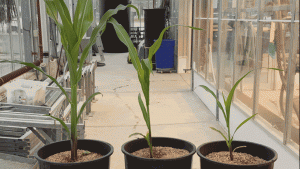
“The process does not define the stress,” Fraser emphasizes. “An agronomist would be required to say ‘this is a disease stress’, or ‘this is nitrogen stress’, or maybe ‘it’s a weed stress’.”
If this study is successful, the two researchers involved would hope technology could be developed to work in conjunction with variable rate fertilizer application or at least the use of unmanned aerial vehicles (UAVs) for crop scouting.
“Here is a theory that we are trying to apply to precision agriculture,” Swanton says. “As with any effort, it’s encouraging, but there is also some variability that we are trying to figure out.”
The question now, he says, is whether or not they can get the variability under control in the experiment. Observations in the field have produced temperature differences that can range between one half to a full degree and Swanton says there is still a lot of work to do to “get the noise out of our data”.
Several experimental errors which needed to be addressed during this growing season included background radiation, sampling air temperature, relative humidity, wind speed, soil temperature, soil moisture, small sample size variability, the impact of leaf angles and leaf age, and even thermal camera calibration errors. Fraser says that from an engineer’s perspective, it’s a mess; but, it’s also a huge learning opportunity.
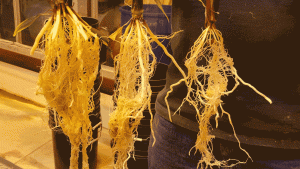
“I’m starting to see exactly what we need to do.” he says, “I think we are realizing that there are variables that we have to measure in the future.”
With much work yet to do to prove the theory truly has something to offer farmers and prove the potential advantages it offers the agricultural industry, both agree that any technological application is still years away from impacting the day to day events on your farm.
This project was funded in part through Growing Forward 2 (GF2), a federal-provincial-territorial initiative. The Agricultural Adaptation Council assists in the delivery of GF2 in Ontario. •








